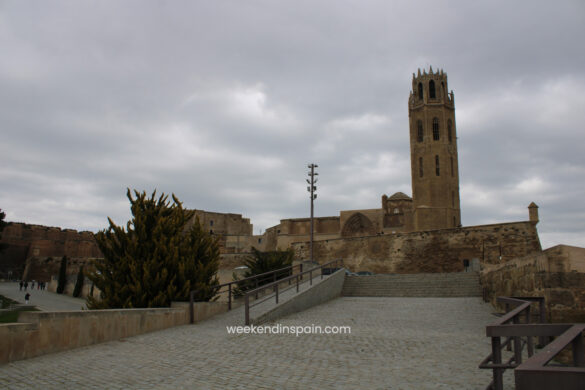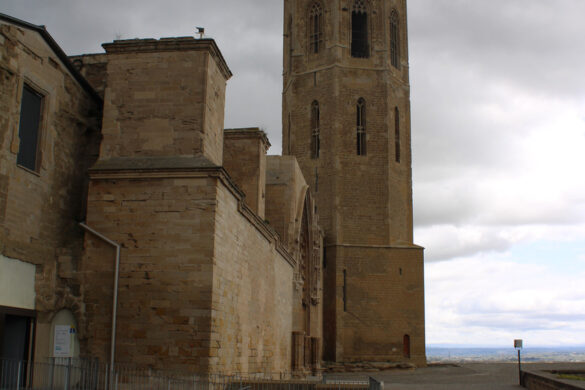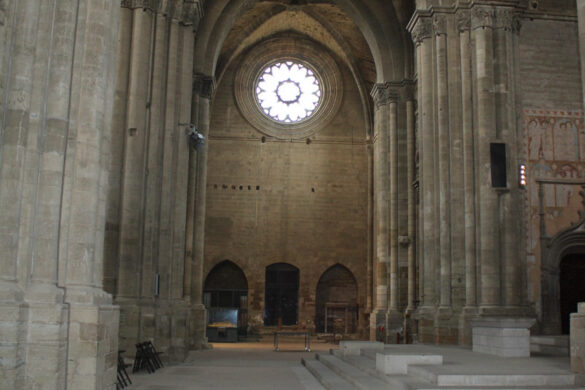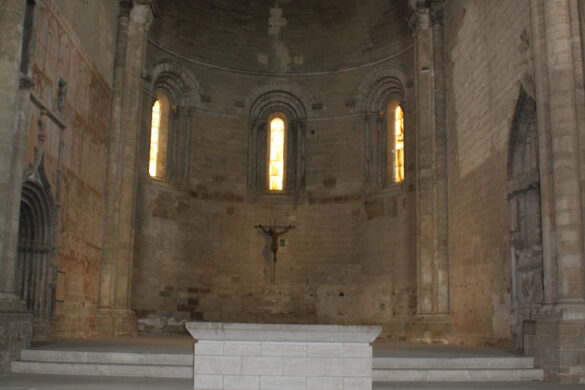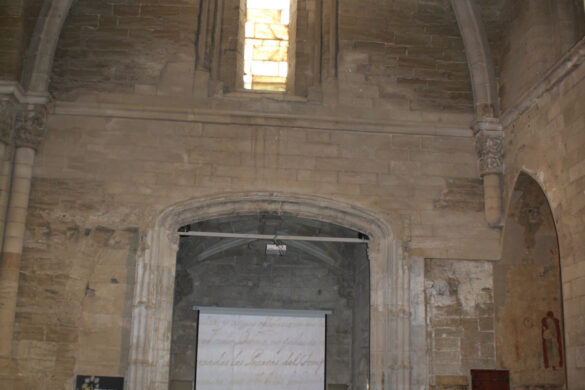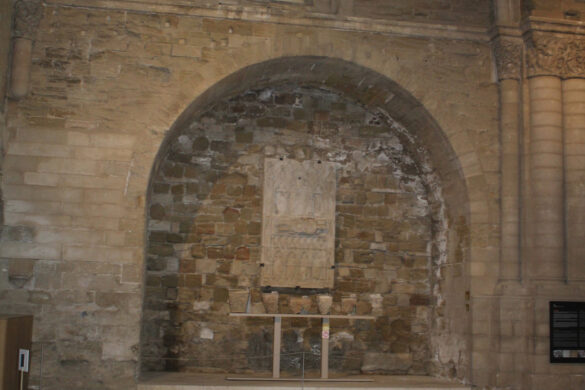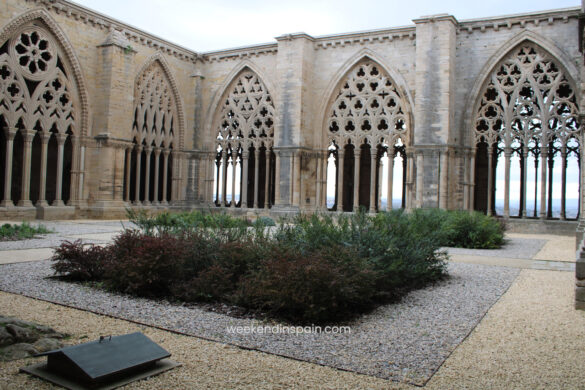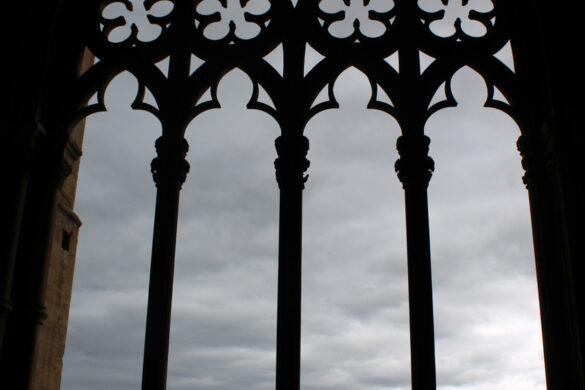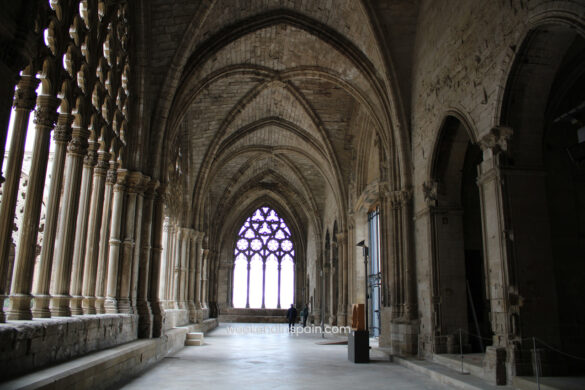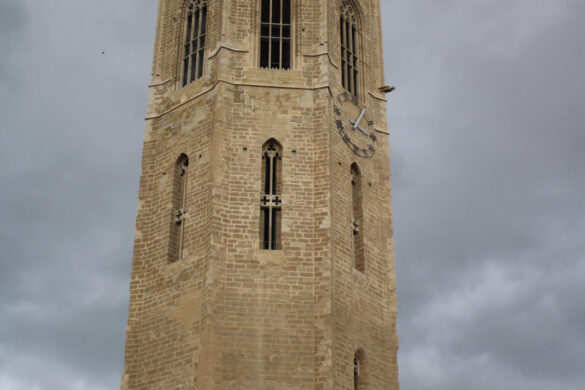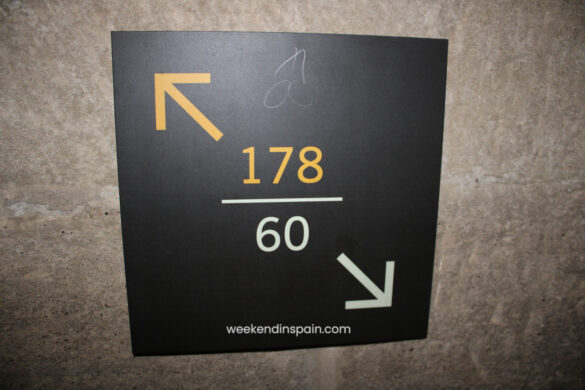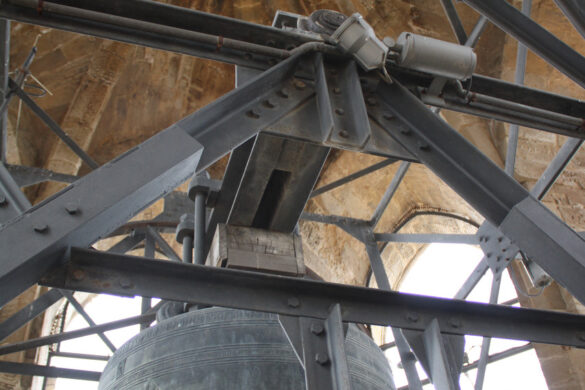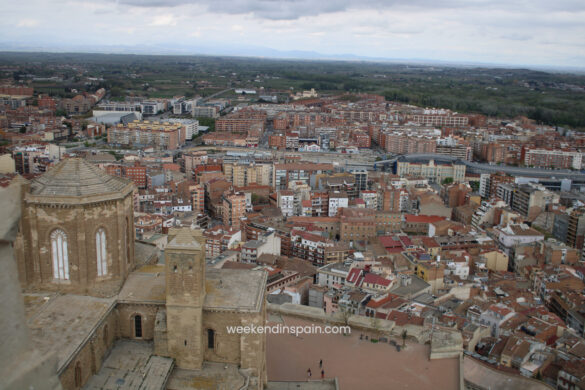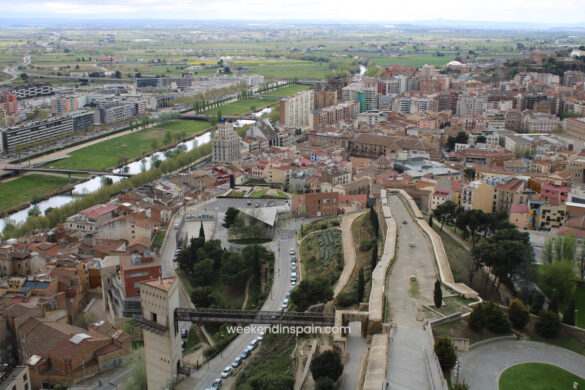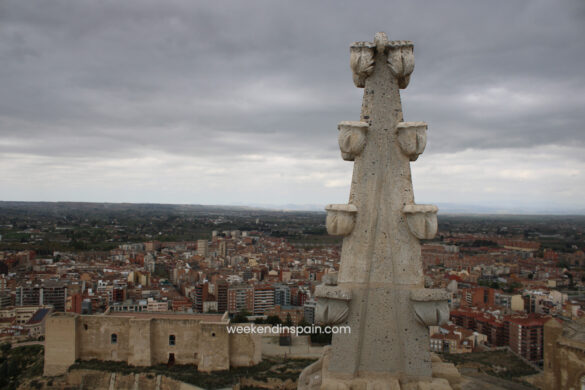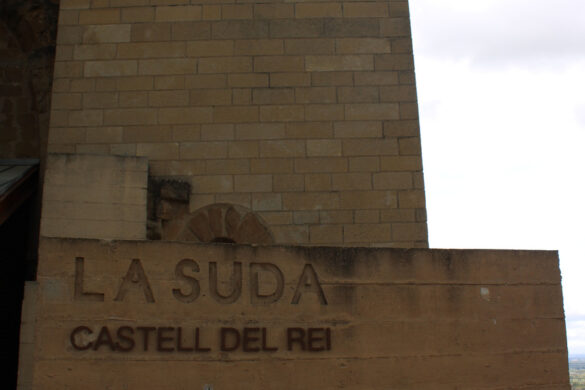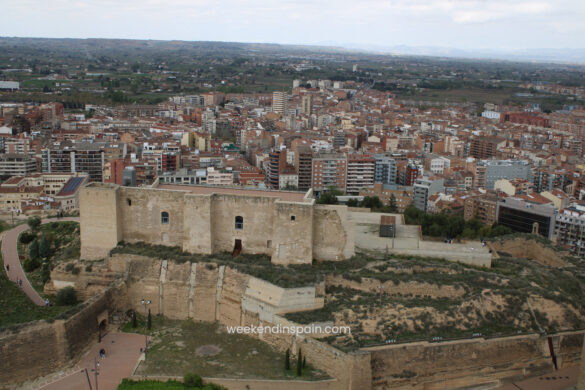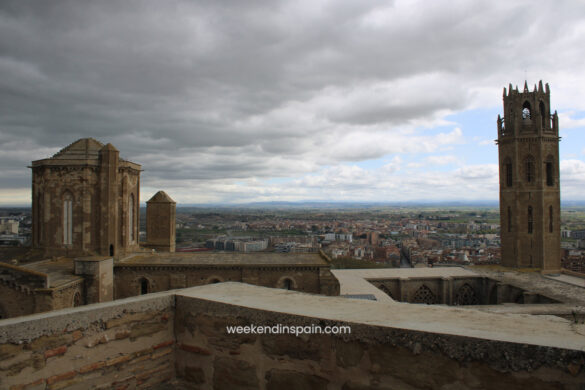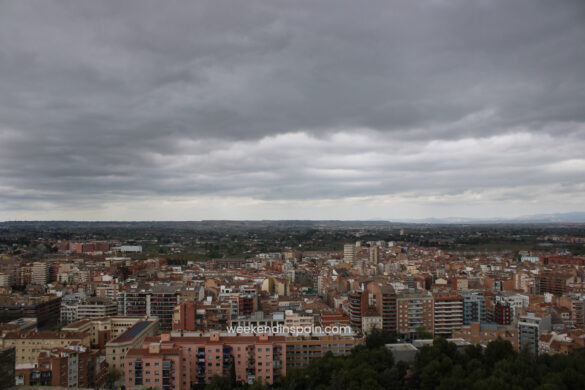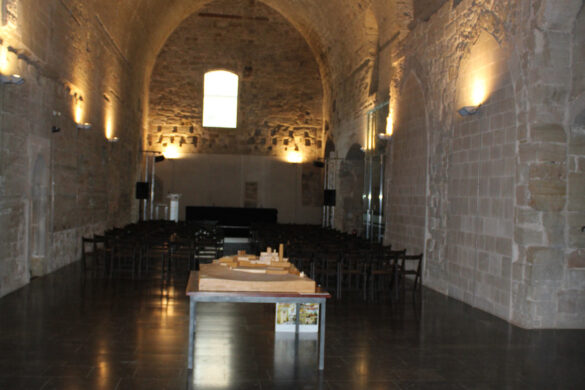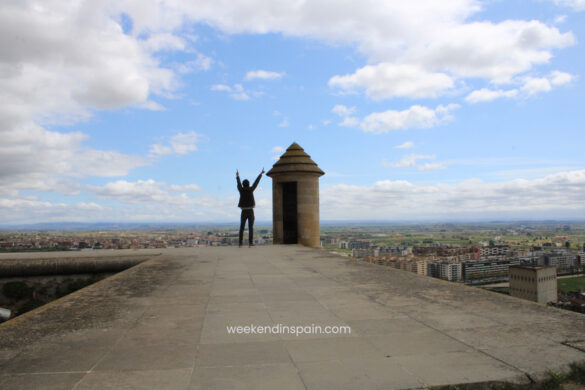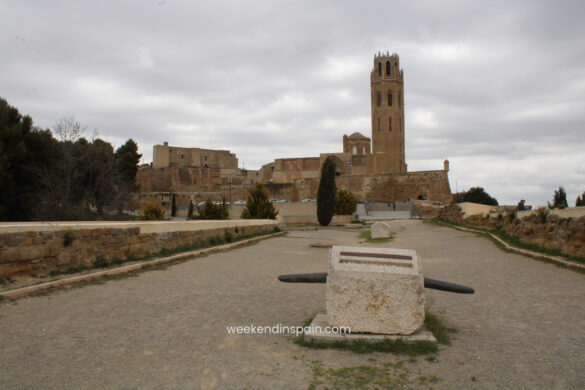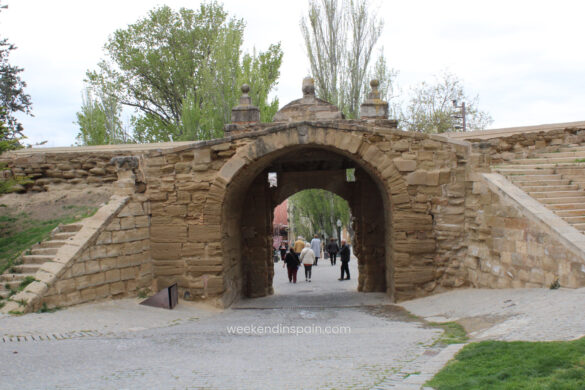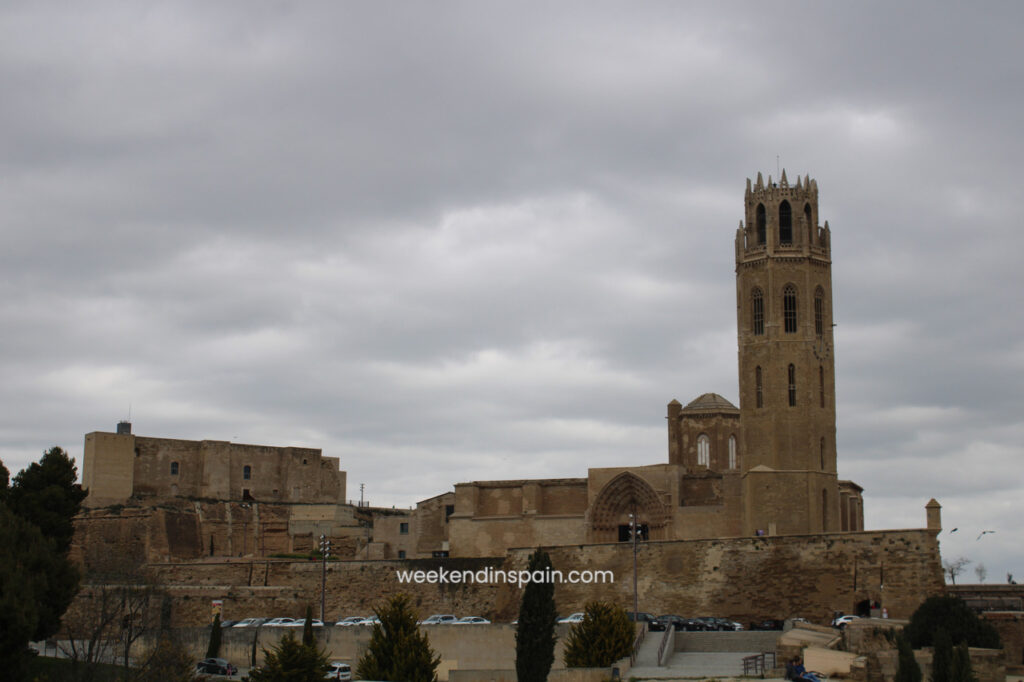
Turó de la Seu Vella is a beautiful and historical monumental complex, comprising the old cathedral, otherwise, known as La Seu Vella, which dates back to the 13th century, defining Catalan architecture. The other sites at the monumental complex are the King’s Castle, also known as La Suda, the military fortifications that surround the complex, as well as various archaeological remains that take us into its past history.
According to historians, the Lberian Lltirta, the Roman Llerda, and the Muslim Larida are buried under its subsoil, as is the Gothic Quarter that was once full of life during the medieval era.
Sadly, over time, the entire hill would be destroyed due to wars, resulting in military fortifications surrounding the cathedral. The only two buildings that weren’t brought down were the cathedral and the castle, which were eventually turned into military barracks, although they would only last till 1948. Since then, restoration work has begun and still continues today.
Table of Contents
LA SEU VELLA CATHEDRAL
The famous cathedral is situated on top of a hill overlooking the entire city of Lleida, as well as the surrounding countryside of Segrià.
Surprisingly, the cathedral was not destroyed by wars, and it was due to the wars that the cathedral was converted into a concentration camp in April 1938.
There is, however, a new cathedral called, Seu Nova, which is located in the city centre.
ARCHITECTURE
In 1193, Pere de Coma was hired by the Cathedral for the construction project. Pere de Coma was the one who introduced Romanesque architecture in Lleida. Little is known about his background, though. La Seu Vella’s construction began at the east end of the church and progressed through the naves to the Romanesque façade. The dome was built at the end. The first stone was placed on 22 July 1203. In the early 13th century, work began on the Canonical House. Then in the 14th century, work would begin on the cloister, the bell tower, the Gothic façade of the Apostles, and the church’s main chapels. Interior design and decoration, such as stained-glass, an alter, a pulpit, paintings, and so on, were added in the 15th century.
The interior of the cathedral is very bright, with a basilica floor plan of a Latin cross with three naves, crossing under an octagonal dome, and a transept with five apses.
The eye-catching features of the interior are the stonework in the naves, the remains of Gothic mural paintings, and the beautiful carvings.
APOSTLES’ GATE
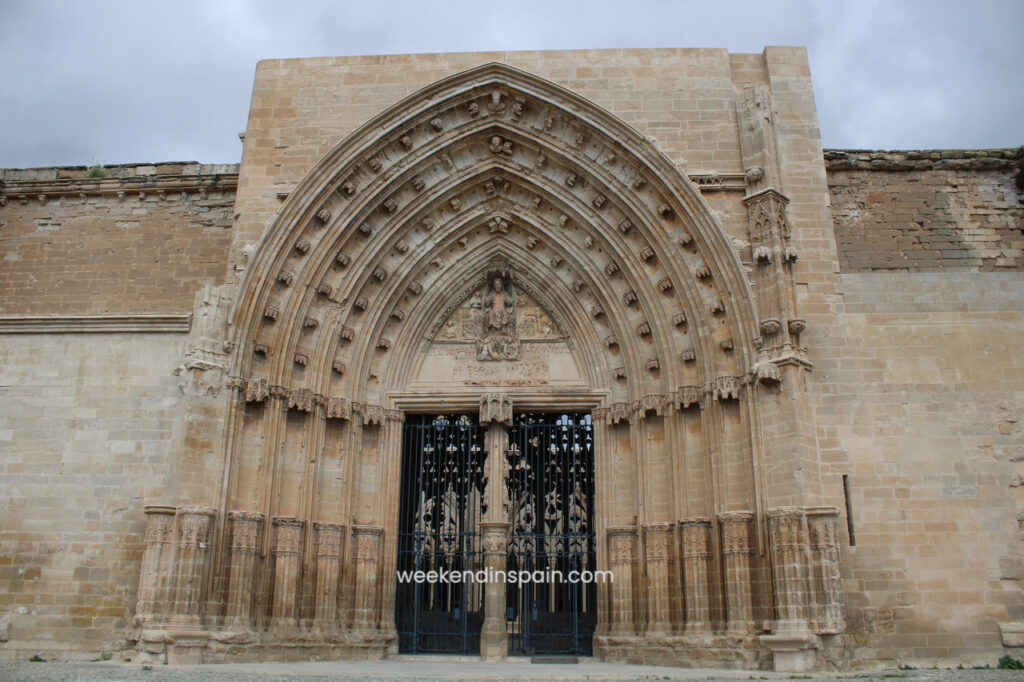
There are three other similar gates like this one, but this one in particular, known as The Apostles’ Gate, is what really captured my attention, for there are images of the apostles over the gate. The sculptural decoration of the gate includes the Virgin, as well as prophets and angels, which is why, it’s also known as the Gate of Final Judgement.
The gate is the main entrance to the cathedral complex although we entered from the left side of the building.
CHURCH
The church has three naves and a transept that opens into five apses. The sixteen columns that surround the pillars define the transitional period between Romanesque and Gothic architecture, and also depict sculptural art on the windows and portals.
CHAPELS
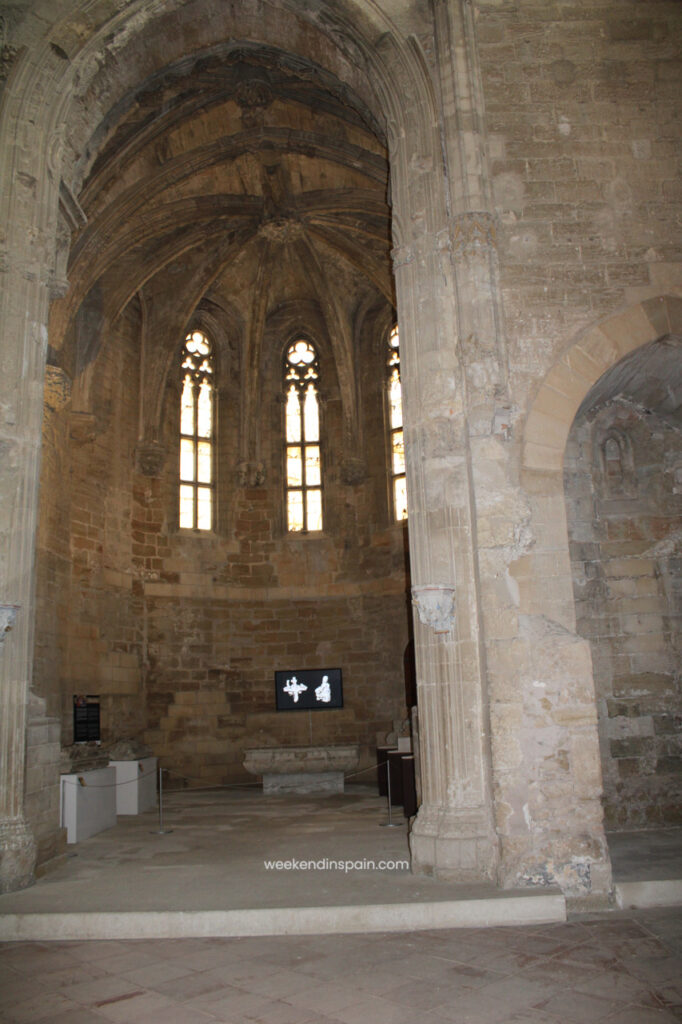
Inside the church, you’ll come across many chapels. All these chapels, were elements of prestige and were built by the most illustrious and prominent families. The funerary chapels were of great value, and the reason behind building them was that the wealthy owners sought to rest eternally in them.
The temple is a Romanesque construction with three naves and a long transept, with a series of funerary chapels incorporated in the 14th and 15th centuries and belonging to the main noble families; the Romanesque doors stand out, with their unique decoration, and especially the Porta dels Fillols.
CLOISTER
The Gothic cloister built in the late 13th and all of the 14th century, with unusual dimensions, is considered one of the largest in Europe due to its massive size. The work done on the windows is praiseworthy.
The cloister is connected with the main Romanesque façade and comprises four galleries and seventeen windows, twelve of which surround the central courtyard, whilst the remaining five face the city, which gives the southeast gallery a wonderful view. The cloister was built at the foot of the church as there wasn’t much space.
Like the church, the cloister was a cemetery and place of worship, where church members, builders, traders, and educationalists sought eternal rest.
BELL TOWER
Located in the southern corner and measuring sixty metres in height, the bell tower has a spiral staircase with 238 steps that lead to the roof with stunning views. The bell tower was built between the mid-14th century and the 15th century. The ground floor of the tower was converted into a private chapel for the Safont family, whilst other floors were used for the machinery of the clock and the bells.
Apart from the spiral staircase, the bell tower also has a chapel dedicated to Saint Paul the hermit and Saint Anthony – both of which can be assessed from the cloister and four rooms above. The first room was used by the bell-ringers, who were in charge of ringing the bells, and the other three were used for the clock mechanism.
According to historians and old records, there were eleven bells in all that were rung on feast days and days of mourning. A group of five other bells were cast in the middle of the 20th century. Today they ring together to mark public holidays and feast days.
There are, however, two bells that ring every day: Mónica and Silvestra. Mónica indicates the quarters of an hour, whilst Silvestra, the hours.
In April 2022, the Monica Bell was moved to Austria to be restored. In 2004, a crack about fifteen centimeters long was detected, and thus needed restoration. The bell arrived back at La Seu Vella in August.
The hourly bell, popularly called “La Silvestra,” is the fourth largest bell in Catalonia.
I would highly recommend going up to the top of the tower.
VIEWS FROM THE TOP OF THE BELL TOWER
After climbing 238 steps, you’re rewarded with these magnificent view of not only parts of the monumental complex, but also of the entire city of Lleida, as well as the neighbouring contryside of Segrià County.
LA SUDA / THE KING’S CASTLE
Just a few metres away from La Seu Vella cathedral is the King’s Castle, otherwise, popularly known as La Suda. Suda is an Arabic word, which means a closed urban area. The architecture dates back to the late 13th and 14th centuries, with, both Romanesque and Gothic architecture coexisting together. The castle, which was once a Moorish fortress, later became the residence of the King of the Crown of Aragon during the 13th century.
In this castle, political meetings and courts were held on various occasions. However, the most important occasion of all was when a six-year-old boy, was crowned King by Aragon and Catalonia. He would eventually go on to become James I the Conqueror.
ARCHITECTURE
Built on the highest part of the hill, the castle was constructed with a rectangular plan, a central courtyard, a chapel, and a viewpoint on the north side. During the military intervention, it was used as a gunpowder store, which is why during the explosions of the French War and the Spanish Civil War, a large part of it was destroyed, with only its southern part remaining.
The castle has a massive roof terrace with panoramic views of the entire city of Lleida. Not just that, you also have a stunningly beautiful view of La Seu Catherdral, as you can see from my pictures.
The centre, located in the royal hall of the castle, features a museum area with information panels and an audio-visual projection that recount the past history of the building.
PAST HISTORY OF THE CASTLE
There was a huge boost in trade and construction between the 12th and 14th centuries, and it is during this period that the castle was inhabited and lively. And it is where the King resided during his visit to Lleida. However, during the 15th and 16th centuries, the kings would not lodge there any longer, thus, it was then transformed into military barracks during the Catalan Revolt.
La Suda was declared a historic-artistic monument in 1931.
FORTIFICATIONS
Due to wars, the entire hill would be destroyed, and military fortifications would be built in its place between the 17th and 20th centuries.
The fortifications at Turo de la Seu Vella boast of great defensive structures, such as bastions, tunnels, bomb shelters, a bunker, and other underground spaces. However, what really captures your attention are the bastions. You can literally feel how strong and defensive they must have been during the wars.
For further protection, anti-aircraft batteries were installed in the bastions of the King and Queen. Some areas of the hills were also used for execution by firing squad.
The bomb shelters beneath the castle and the bunker are still visible today. The fortifications recount the interesting and tragic history of the entire hill.
ARCHAEOLOGICAL REMAINS
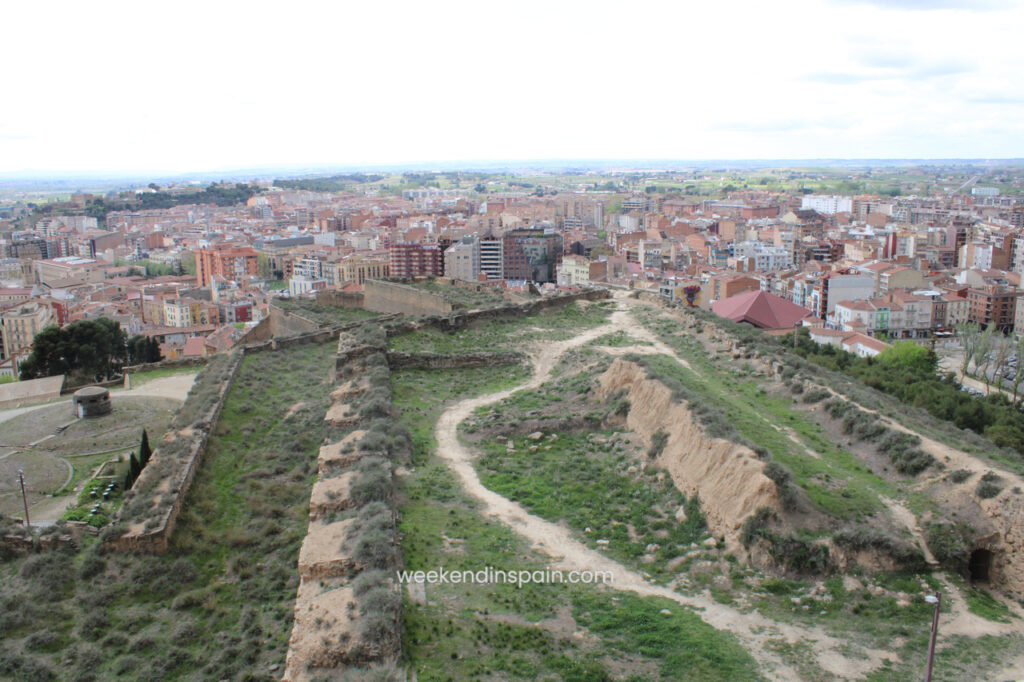
The archaeological remains at Turo La Seu Vella have a lot of history from the past. Recent excavations have uncovered interesting objects and materials that shed light on the hill’s various periods of rule.
The most important remains are of the buildings attached to the Andalusian occupation that demonstrate continuous activity throughout the area of the hill from the 10th century until the conquest of the city in 1149. From this time, the hill was profoundly remodeled into an excellent Gothic quarter. Unfortunately, the vibrant neighbourhood would be totally destroyed between the 17th and 18th centuries, with the exception of the Seu Vella and the King’s castle, the only two buildings that have survived till today.
OPENING AND CLOSING TIMES – LA SEU VELLA CATHEDRAL
01/05 – 30/09 (1st of May to 30th of September)
Tuesday to Saturday: 10:00 to 14.00 and 16.30 to 19:30
Sundays and holidays: 10:00-15:00
01/10 – 30/04 (1st of October to 30th of April)
Tuesday to Friday: 10:00 to 13:30 or 15:00 to 17:30
Saturday: 10:00-17:30
Sundays and holidays: 10:00-15:00
Closed Mondays, except holidays, and 25/12, 26/12, 01/01, and 06/01.
Ticket sales and bell tower will close half an hour before the rest of the monument.
OPENING AND CLOSING TIMES – LA SUDA CASTLE
01/05 – 30/09 (1st of May to 30th of September)
Saturday: 10 a.m.–14 a.m.; 16.30 a.m.–19 19.30 h.
Sundays and holidays: 10.00–15.00 h.
01/10 – 30/04 (1st of October to 30th of April)
Saturday: 10.00 – 13.30 / 15.00 – 17.30 h.
Sundays and holidays: 10.00–15.00 h.
Closed Mondays, except holidays, and 25/12, 26/12, 01/01, and 06/01.
Ticket sales will close half an hour before the rest of the monument.
TICKET TYPES AND PRICES
Find out the cost of sightseeing tickets, and what discounts are available.
- €7 General Admission to the Monumental Complex
- €5 reduced admission to the monumental complex for:
- Youths from 7 to 18 years of age – Youth Card cardholders – Groups of more than 20 people – Visitors older than 65 years of age – Pensioners.
- Free admission for:
- Children under 7 years of age – Groups of students accompanied by certified teachers – ICOMOS – Official Guides – Disabled – Large family cardholders – Single parent cardholders – Local holidays – Pilgrims – Religious order – Associated organisations –
- Free admission 1st Tuesday of each month – September 11th (Catalonian National Day)
To enjoy these discounts, cardholders must identify themselves.
For any further information or assistance, here’s a link to the official website:
http://www.turoseuvella.cat/en
BEST TIPS, REVIEW AND ADVICE
MY REVIEW AND ADVICE
If you’re fond of cathedrals, castles, old architecture, heights, and photography, then you should definitely visit Lleida. And the best advice I can give you is that you do not need to stay there for the night as you can see the entire city in just one day. There is another monumental complex that you can visit, and it isn’t too far from Turo de la Seu Vella, it’s called “El turó de Gardeny “. The building isn’t as big as Turo de la Seu Vella, and you can view it in less than 45 minutes, or max, an hour. But if you’re looking to relax in Lleida, one night should be more than enough.
I will be writing a post on “El turó de Gardeny” soon.
Thanks for stopping by. I hope you enjoy Lleida as much as I did.
